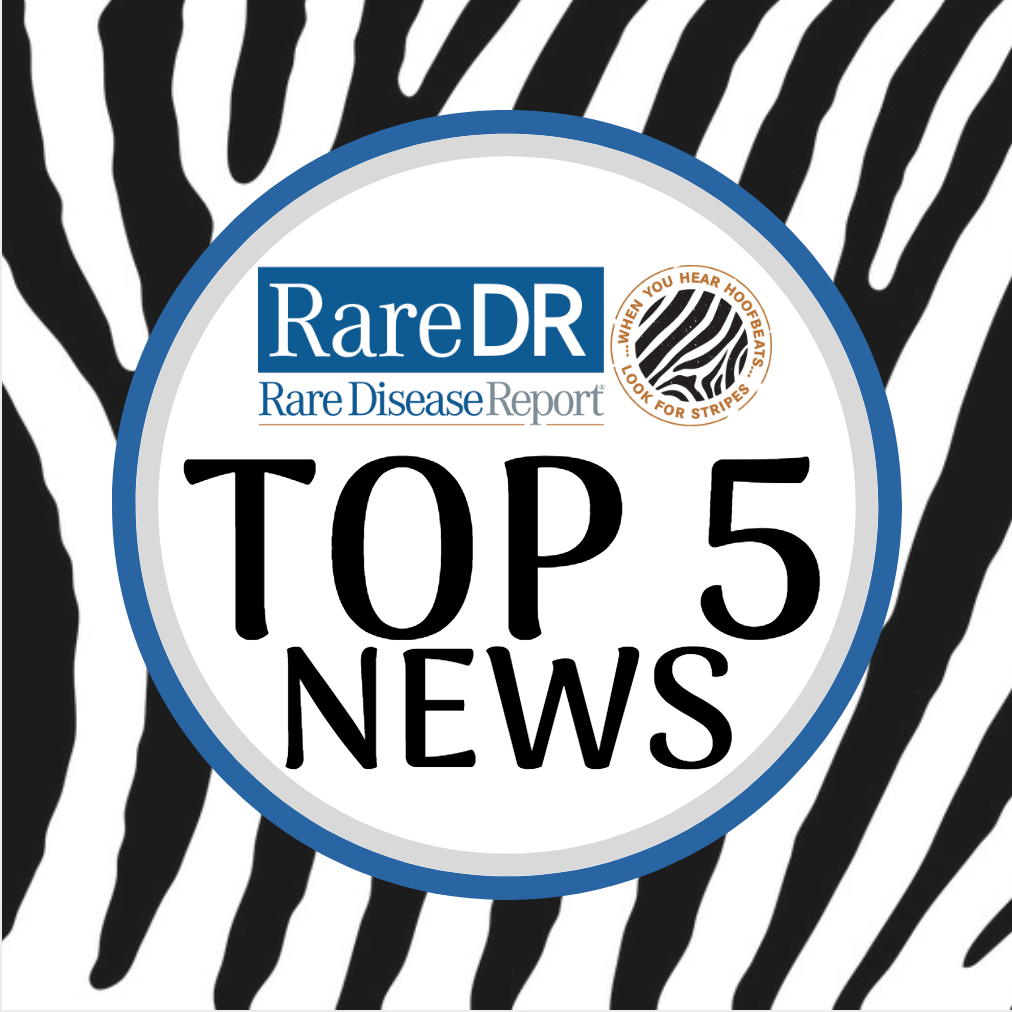Article
Top 5 Rare Disease News of the Week—June 10, 2018
Author(s):
Stay up-to-date on the latest rare disease news by reading the top 5 articles of the week.

#5: FDA Approves Treatment for Chronic Lymphocytic Leukemia & Small Lymphocytic Lymphoma
Today, VENCLEXTA, AbbVie Inc, and Genentech Inc announced that the US Food and Drug Administration has approved venetoclax for treatment of patients with chronic lymphocytic leukemia (CLL) or small lymphocytic lymphoma (SLL), with or without 17p deletion, who have received at least one prior therapy.
"VENCLEXTA now gives indicated patients a new opportunity to significantly reduce the risk of their disease progressing, compared to a current standard of care. This combination provides previously treated CLL or SLL patients with a chemotherapy-free, fixed duration treatment allowing patients the ability to stop treatment after approximately two years,” stated Michael Severino, MD, executive vice president, research and development, and chief scientific officer, AbbVie, exclusively to Rare Disease Report®.
#4: Gilteritinib Proves Promising for the Treatment of FLT3mut + Acute Myeloid Leukemia
Read more about VENCLEXTA.Astellas Pharma Inc, planned analyses were presented regarding the trial in progress, phase 3 trial of gilteritinib as a maintenance therapy after allogeneic hematopoietic stem cell transplantation in patients with Fms-like tyrosine kinase 3 internal tandem duplication (FLT3-ITD) mutations in acute myeloid leukemia (AML) at the 2018 American Society of Clinical Oncology (ASCO) Annual Meeting in Chicago, Illinois.
AML is a blood and bone marrow cancer characterized by an excess of immature white blood cells. Gilteritinib is a highly selective, potent FLT3/AXL inhibitor.
#3: FDA Grants Fast Track Designation to Betalutin for Follicular Lymphoma
Read more about gilteritinib.The US Food and Drug Administration (FDA) has granted Fast Track designation in the United States to Nordic Nanovector ASA’s 177lu-lilotomab satetraxetan (Betalutin) for the treatment of patients with relapsed or refractory follicular lymphoma (FL) who have had a least 2 previous systemic therapies.
“We are pleased to have been granted Fast Track designation for Betalutin. This designation is based on the promising safety and preliminary efficacy data in patients with relapsed/refractory indolent non-Hodgkin’s lymphoma from the first part of the LYMRIT 37-01 study and highlights the potential of Betalutin to be a new therapeutic option for these patients,” Nordic Nanovector’s CMO, Lisa Rojkjaer, said in a recent statement.
#2: Treatment for Ultra-Rare Neuroendocrine Cancers Shows Efficacy in Phase 2 Trial
Read more about Betalutin.At the 2018 American Society of Clinical Oncology (ASCO) Annual Meeting, Progenics Pharmaceuticals, Inc presented updated overall survival data from the company’s pivotal Phase 2 trial of its targeted, high-specific-activity radiotherapeutic candidate, iobenguane I 131 (AZEDRA), in patients with malignant, recurrent, or unresectable pheochromocytoma and paraganglioma (pheo/para).
The data was presented by the trial’s lead investigator Dr Daniel Pryma, associate professor of Radiology & Radiation Oncology and chief of the division of Nuclear Medicine & Clinical Molecular Imaging at the Perelman School of Medicine at the University of Pennsylvania.
#1: Exploring Myeloproliferative Neoplasms with Ruben Mesa, MD: What’s on the Horizon?
Read more about AZEDRA.At the American Society of Clinical Oncology (ASCO) 2018 annual meeting in Chicago, Rare Disease Report® sat down with Ruben Mesa, MD, director at Mays Cancer Center at UT Health San Antonio and MD Anderson Cancer Center, to discuss myeloproliferative neoplasms and other rare cancers.
Rare Disease Report® (RDR®): As an expert in myeloproliferative neoplasms (MPNs), can you speak to your experience with MPNs and what your approach has been with these rare diseases?
Mesa: The matter of myeloproliferative neoplasms, as I tell my patients, [is they] are not rare or common cancers. What I share with folks in the era of precision medicine and precision oncology [is that] we find, to some degree, all patients have a rare disease. [That’s] because however their disease affects them, whether it’s something that you don’t hear much about, like myelofibrosis or polycythemia or even if it’s something [common] like breast cancer, there’s probably a thousand different subtypes, each one of which is kind of rare in and of itself.
My approach with these diseases really focuses on trying to individualize the therapy as best we can. That begins with the genetic understanding of the disease, which we learn more about every day, but [it also includes] trying to really understand and mirror that with how the disease is affecting them, what symptoms [it gives] them, what difficulties [it] has given them, and then being mindful of their overall health, their fitness, as well as the rest of their life circumstances. The same disease can occur in someone of 30 or 80 years of age, but how we approach it really needs to be quite different.
RDR®: What are the greatest challenges in treating MPNs?
In myeloproliferative neoplasms, there are several challenges. One [challenge is having an] early understanding of why the disease develops and why it progresses. In many ways, [MPNs] are similar to other diseases. I’d say we’ve learned more about the genetic pieces, but it’s not fully mapped out. What I share with patients [is that] it’s a bit like a jigsaw puzzle that has 500 pieces, but we only have 200 on the board. We understand some parts—there are some parts of the picture that are fleshed out—but they’re not all there.
Check out more exclusive coverage from the 2018 ASCO meeting.
Read the rest of the interview.





